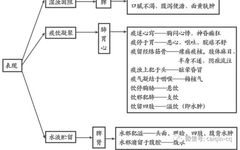Phlegm-Dampness Stored in the Five Organs: What to Do About Phlegm Accumulation in the Spleen and Stomach
Director Ning provides you with knowledge on health and wellness.Click below tofollow for free The production of phlegm is often caused by external factors such as the six excesses, dietary indiscretions, or emotional disturbances, leading to dysfunction in the qi transformation of the lungs, spleen, and kidneys. The spleen governs transformation and transportation; when the … Read more









